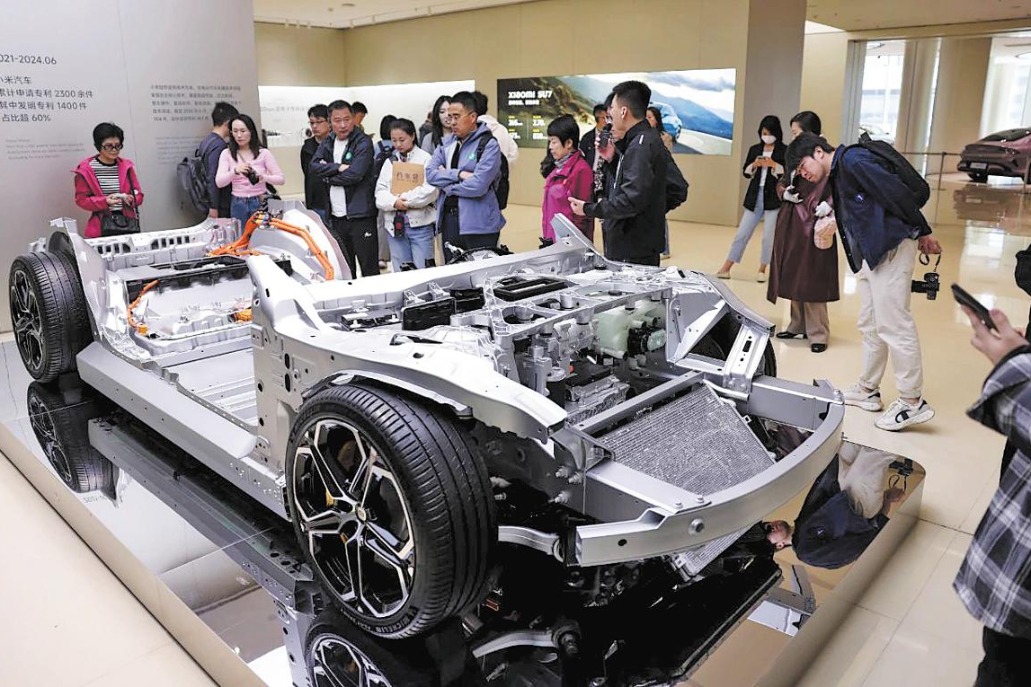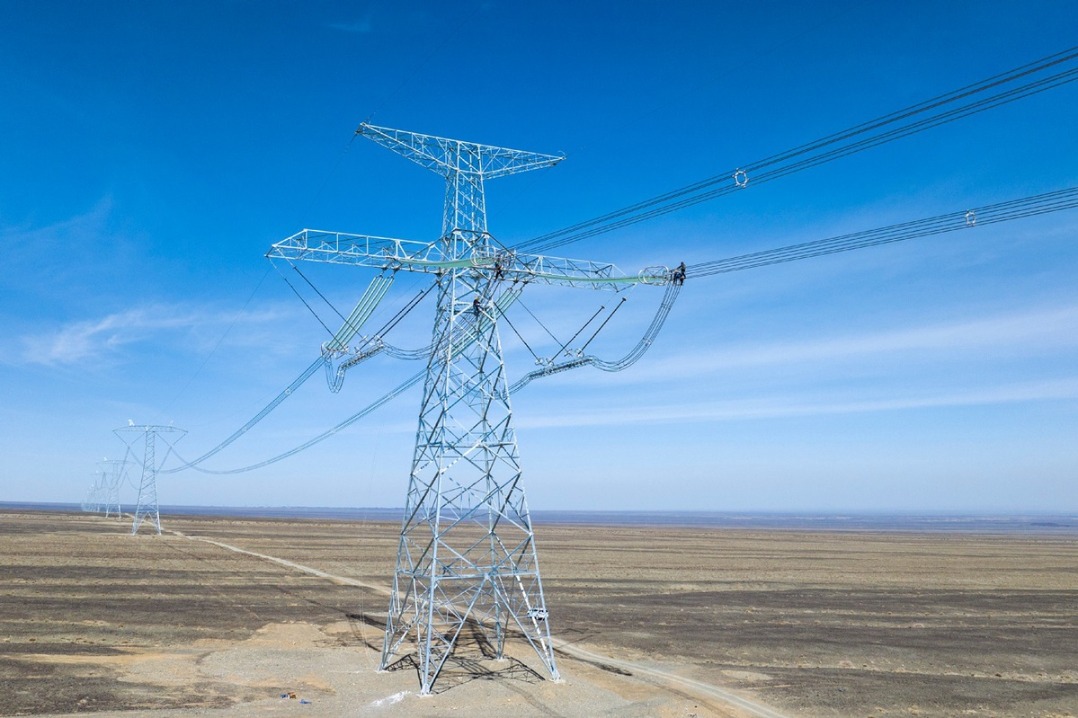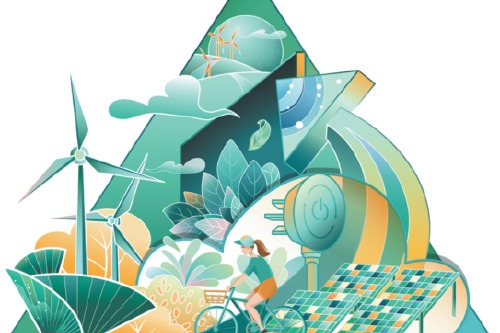Tackling challenges of the new millennium requires a rethink


As we enter the 21st century, humanity is confronted with a convergence of complicated and diverse challenges. These issues are not isolated. Instead, they are deeply spread across social, economic, and environmental systems. The relationship between them is becoming increasingly urgent as the world continues to develop at a rapid pace. For instance, climate change is not just an environmental issue. It is also a side effect of rapid capitalist development and has substantial impacts on social equity. Similarly, the widening gap between rich and poor in society and the unequal distribution of resources will exacerbate environmental degradation and social conflict. In this context, it is essential to adopt a comprehensive and interdisciplinary approach to problem-solving. Solving these issues in isolation risks oversimplifying their complexity and overlooking potential synergies between solutions. This essay will identify the main challenges of the new millennium and evaluate the statement that facing the challenges of the new millennium requires us to treat social, economic, and environmental systems as interdependent, exploring both their strengths and their potential limitations.
The challenges of the new millennium are unprecedented in scale, complexity, and globality. Unlike the problems encountered in the past millennium, this period, as described in The Great Acceleration: The Environmental History of the Anthropocene since 1945, has witnessed rapid development in various aspects such as population growth, industrialization, urbanization, and environmental change. These changes have not only propelled the progress of society and economy but also brought about negative impacts involving the interweaving and interaction of social, economic, and environmental systems (McNeill, 2000).
The challenges in the social, economic, and environmental realms are closely intertwined. Environmentally, climate change is undoubtedly one of the most pressing challenges. The increase in greenhouse gas emissions due to the Industrial Revolution has led to rising global temperatures, frequent extreme weather events, and the loss of biodiversity, threatening the stability of ecological systems (IPCC, 2021). Social challenges are also severe, with about 700 million people still living in extreme poverty (United Nations, 2020). In the economic sphere, the imbalance in wealth accumulation and resource distribution brought about by globalization has further exacerbated economic instability, as exemplified by the financial crisis of 2008 (Piketty,2014). These issues are interdependent; for instance, climate change exacerbates social inequality, while economic instability weakens the efforts toward environmental protection. As Rockstrom et al. (2009) have pointed out, solving these challenges needs comprehensive solutions that fully consider their interdependencies.
The relationship between the environment and the economy is complex and closely intertwined. Traditional economic development models often rely on the overexploitation of natural resources and the continuous consumption of the environment, leading to significant environmental degradation. For instance, the processes of industrialization and urbanization have intensified the emission of greenhouse gases, driving climate change, and at the same time, the ecological environment faces severe challenges when overexploiting mineral resources and fossil fuels (IPCC, 2021). This economic growth, achieved at the expense of excessive consumption of natural resources, has made environmental issues increasingly severe (Stiglitz, 2015). However, in recent years, with the rise of the concept of sustainable development, economic transformation has gradually taken place. The advancement of a green economy, renewable energy, and a circular economy can not only effectively reduce excessive consumption of the natural environment but also promote the structural transformation of the economy (Rockstrom et al., 2009). By developing green technologies, improving energy efficiency, and promoting low-carbon industries, the relationship between the economy and the environment is striving for a win-win situation. For example, innovation in green technology can not only reduce pollution but also create new job opportunities (Piketty, 2014). Furthermore, governments can use policy tools such as environmental taxation and carbon pricing to internalize environmental costs, incentivizing businesses and consumers to adopt more environmentally friendly production and consumption practices (Stiglitz, 2015). Therefore, the coordinated development of the economy and the environment is not only conducive to improving environmental quality but also key to achieving long-term sustainable economic growth.
However, we should also view the connections between them dialectically. Under the current economic model, the overconsumption of resources and ecological degradation are seen as byproducts of economic prosperity, with economic growth often accompanying environmental destruction. Environmental policies also often imply higher costs for businesses. In developing countries, facing the critical issue of extreme poverty, relying on cheap energy sources such as coal to provide electricity and support economic growth, and improve living conditions is also necessary (Dasgupta, 2021). When facing natural disasters, such as dealing with earthquakes or hurricanes, rebuilding infrastructure and restoring economic activities often take precedence over environmental protection measures (Cutter et al., 2013). In natural disasters or humanitarian crises, economic and environmental goals may come into direct conflict. At such times, we must separate the two issues to find the optimal solution.
The interdependence between the environmental systems and society is also importantin addressing the challenges of the new millennium. Climate change, for example, is hitting poor areas particularly hard. Power outages, food shortages, and epidemics caused by extreme weather events tend to first affect poor, resource-poor regions (IPCC, 2021). Because their resources are only enough to meet the most basic life or even the most basic survival are not enough. It is difficult for them to have adequate supplies and response plans for emergencies. Dorling's (2021) study also shows that unequal societies tend to ignore environmental problems. A small number of wealthy people enjoy excessive resources and consumption opportunities, and they often control the direction of policy and prioritize their own interests. At the same time, although vulnerable groups are more affected by industrial pollution, they cannot effectively participate in environmental governance because of the lack of voice. Therefore, priority should be given to the needs of vulnerable groups when addressing environmental problems. As Rockstrom et al. (2009) point out, environmental sustainability and social justice are mutually reinforcing. There are already some successful examples in developing countries. China's "sponge cities" alleviate urban waterlogging by restoring urban wetlands and rivers, which can improve the quality of life of urban residents as well as reduce water waste (World Bank, 2019). Similarly, mangrove planting projects in Bangladesh have not only mitigated the effects of climate change but also provided employment opportunities for local residents, alleviated unemployment, and enhanced social stability (Spalding et al.,2014). However, this combination of environment and society is not easy to achieve. While green policies can achieve the sustainable goal of reducing emissions, the interests of developing countries tend to be marginalized (Sachs et al.,2004). Moreover, the international community may neglect cultural and social factors in environmental assistance. For example, the Paris Agreement, while recognizing the special circumstances of developing countries, does not adequately address the reality of the gap in resource allocation between the global South and the North (UNFCCC, 2015). Therefore, in responding to the challenges of the new millennium, social equity and environmental sustainability should be taken into account in accordance with local conditions, so as to formulate policies that take into account both short and long-term interests.
The interdependence of social and economic systems also profoundly influences solutions to the challenges of the new millennium. Economic stability and sustainability often require equal social structures as a basis. Clare Holdsworth pointed out in population and society that the aging society puts great pressure on the welfare system, and at the same time affects the activity of the labor market, leading to the stagnation of economic growth (Holdsworth, 2013). However, current social policies tend to focus on economic growth as the primary goal, while ignoring the long-term risks of some social problems. As mentioned in Hope in the Dark, economic injustice often leads to social protests, and people's dissatisfaction is also an important opportunity for economic model reform, which indicates that the current economic system can no longer meet the deep-seated problems of social needs (Solnit, 2016). To summarize, when economic systems fail to fully address a society's basic needs, inequality deepens, undermining social cohesion and economic innovation. It is therefore essential that social and economic interdependence be used to address the challenges of the new millennium.
In summary, it is necessary to address the challenges of the new millennium with the interdependence of environment, economy, and society, so as to more comprehensively consider multiple factors and find optimal solutions. This is also the goal of mankind's long-term efforts. However, in the face of some unexpected or special situations, it is also necessary to separate them to solve the problem more efficiently.
The author is a student of University of St Andrews.
The views don't necessarily reflect those of China Daily.
If you have a specific expertise, or would like to share your thought about our stories, then send us your writings at opinion@chinadaily.com.cn, and comment@chinadaily.com.cn.


































